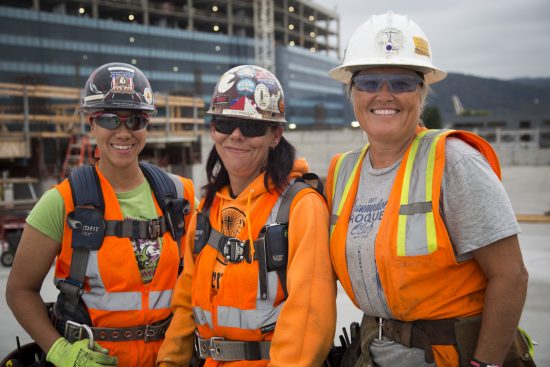Metro Adopts The Construction Career Pathways Framework

In 2018, Metro regional government released a labor market study for the construction industry and the potential economic impact for our region’s workforce. Greater Portland is growing and the construction industry is growing with it. There is an anticipated need for 15,000 new construction jobs in the next 10 years at a time when 20 percent of the region’s workforce is nearing retirement age.
While construction has historically had a male-dominated and racially homogenous workforce, our industry is changing due to intentional efforts such as those spearheaded by Metro’s Construction Careers Pathways Project (also known as C2P2). As industry continues to report a continued shortage of skilled workforce talent, there is an opportunity to tap into existing resources to increase the number of women and people of color that make up a skilled, qualified and diverse workforce pipeline.
Through Metro’s initiative in bringing together public owners to build a regional model of diversity, equity, and inclusion in construction contracting, procurement, and workforce, we have an opportunity to create a shared prosperity model. Construction is one of the few industries still offers a family-sustaining career, with wages averaging $35 per hour and full benefits. Through access to good careers with good wages and benefits, we can create financial stability for our regional workforce, which can be life changing.
Diversifying the construction workforce not only directly addresses the labor shortage; it directly addresses issues of poverty and economic mobility within communities of color and working families in the region. Nationally, women make up only three percent of the skilled trades in the construction industry, and people of color make up nineteen percent nationwide. In Oregon, women comprise just under eight percent of the skilled trades, with minorities accounting for twenty percent statewide in the industry.
Without a pathway to financial independence and stability, women can become limited in their choices, in their personal safety, and in their long-term health and well-being. Lack of access to well-paid job opportunities is one reason poverty rates for women are substantially higher than those for men—here in Oregon, almost a third of households headed by single women live below the self-sufficiency standard according to the 2017 report, Count Her In, by the Women’s Foundation of Oregon. For women of color in Oregon, the situation is even direr as 86% of Black and Latino female-headed households with children do not have sufficient income to meet their basic needs.
The report notes that improving educational outcomes for Oregon’s women will not solve this problem as the earnings gap for women actually widens with more educational attainment. Because Oregon’s female workforce is concentrated in low-wage occupations, in fact 60% of all minimum wage workers in Oregon are women, connecting women to construction careers can mean economic stability for a significant percentage of our families.
This is why Oregon Tradeswomen joined with a host of other organizations across the region in support of Metro’s C2P2 model, working with public agencies, labor unions, workforce development organizations, and contractors, to leverage capital investments to grow and diversify the region’s workforce. By recruiting and supporting women and people of color in the skilled trades, we strengthen our construction workforce for decades to come while at the same time, creating needed financial stability for families and communities through this shared prosperity model.
As we make progress toward these shared goals, our region’s economy will be stronger and more equitable.